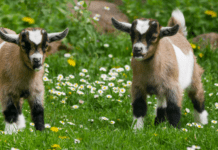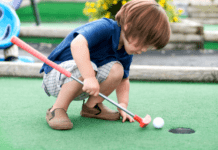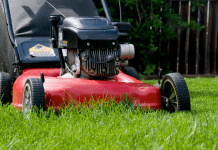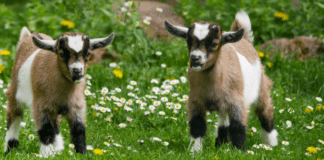Although some people supposedly enjoy the frigid winter months, many of us enter the new year already looking forward to the warmth of spring. Now is the perfect time to begin to plan your garden! My family loves growing our vegetables and fruits, but inevitably if we don’t plan ahead of time, we end up unorganized and spending extra money. 
First, you have to consider your garden space.
Will you be planting in pots, in garden boxes, or somewhere else? We built some simple, inexpensive garden boxes a few years ago. We have them set-out in our yard in a space that gets plenty of sunlight but is also away from our patio. Having a garden, and precisely some types of plants and flowers, too near your living area can draw bugs and pests toward your home and outdoor living areas. To avoid this, we simply moved our boxes farther into our yard. We also use large planters on our deck for lettuce, spinach, carrots, herbs, and strawberries. Keeping these up close to the house helps to deter rabbits from eating all of their favorites. It also gives our boys the chance to be more involved and to take responsibility for watering, maintaining, and harvesting. One of my absolute favorite sights is shirtless toddlers playing in the pots, eating strawberries and herbs directly from the plant.
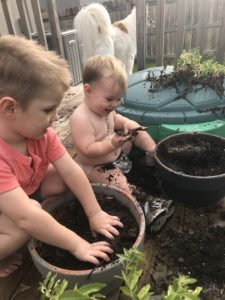
Considering Sunlight
It’s also important to consider what type of sunlight your garden will be exposed to, as well as how easily you will be able to water your plants in that location. Some plants, like cucumbers, melons, squash, tomatoes, and peppers, enjoy full sun (6-8 hours per day). Others, like beans, onion, radish, and beets, prefer partial sun (4-6 hours per day). Finally, some plants enjoy minimal sun (2-4 hours per day). Some of these plants include lettuce, spinach, and kale. Another reason we choose to keep our lettuces and spinach near our home is that it’s slightly more shaded and easier to monitor how those delicate veggies are faring during the intense heat of the summer.
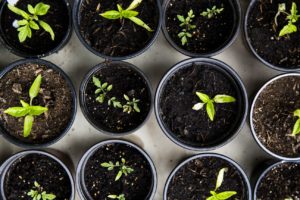
Space is also a huge consideration.
Some plants, for example, watermelons, require ample space to grow and spread. First, consider how much space you have and don’t try to over plant your area. Remember, you can always expand your garden the next year, but over planting a garden box may result in plants that simply don’t have the room to flourish. Since our garden boxes are relatively small, we tend to stick to two or three types of vegetables per box. We have two 6 foot by 3-foot boxes. This year, we plan to grow banana peppers and cucumbers in one box, and green beans, sugar snap peas, and tomatoes in the other. Planting vining plants near a trellis for them to grow up is a great way to maximize space. It also makes it easier to see and pick ripe veggies. We chose those vegetables because our family enjoys them, but also because they are easy and fun for our boys to pick and eat. We also tend to end up with excess veggies, and like to choose vegetables that we know that we can pickle or can. 
Planting a Garden Early
One money-saving strategy we try to utilize is planting our veggies from seeds, beginning around March. Seed packets are typically far less expensive than buying the small, pre-grown plants at a nursery, and we can keep the remaining seeds in the refrigerator to extend their lifespan for several years. Plus, our boys love planting seeds and watching them grow. We keep a few leftover cardboard egg cartons, break them down and evenly spread soil into the carton, and plant our seeds! We then keep our cartons on a sunny window sill. My three-year-old loves coming downstairs in the morning to check their progress and making sure they’re watered. These cardboard cartons can be easily separated when it’s time to transplant into the soil. Don’t forget to label your containers, or when your seedlings begin to sprout, and it’s time to plant, you may not know what you’re planting!

This brief introduction into garden planning truly just scratches the” topsoil” of the incredible amount of knowledge and wisdom required for successful gardening. One of the beautiful things about gardens is that if you make a mistake, the changing of the seasons will always bring you another chance the following year. Making mistakes is part of the learning process, and will help you to figure out what works best for you, your family, and your garden space. If you have questions, you can always ask your local garden center or find a friend or family member who may be able to offer some friendly advice. Happy planting!


